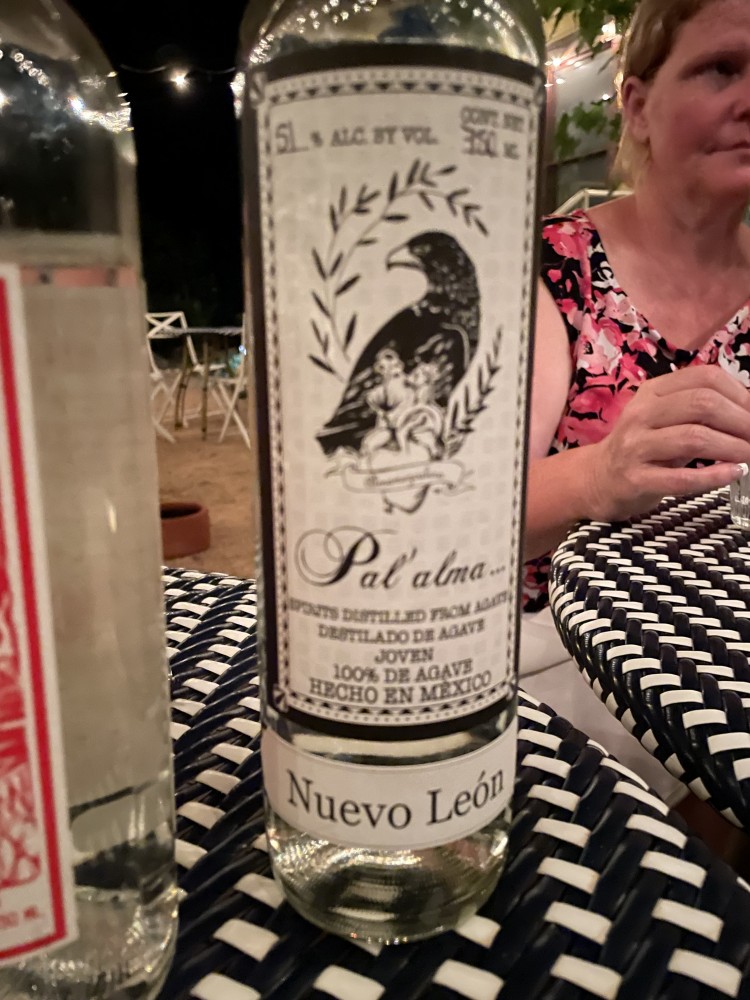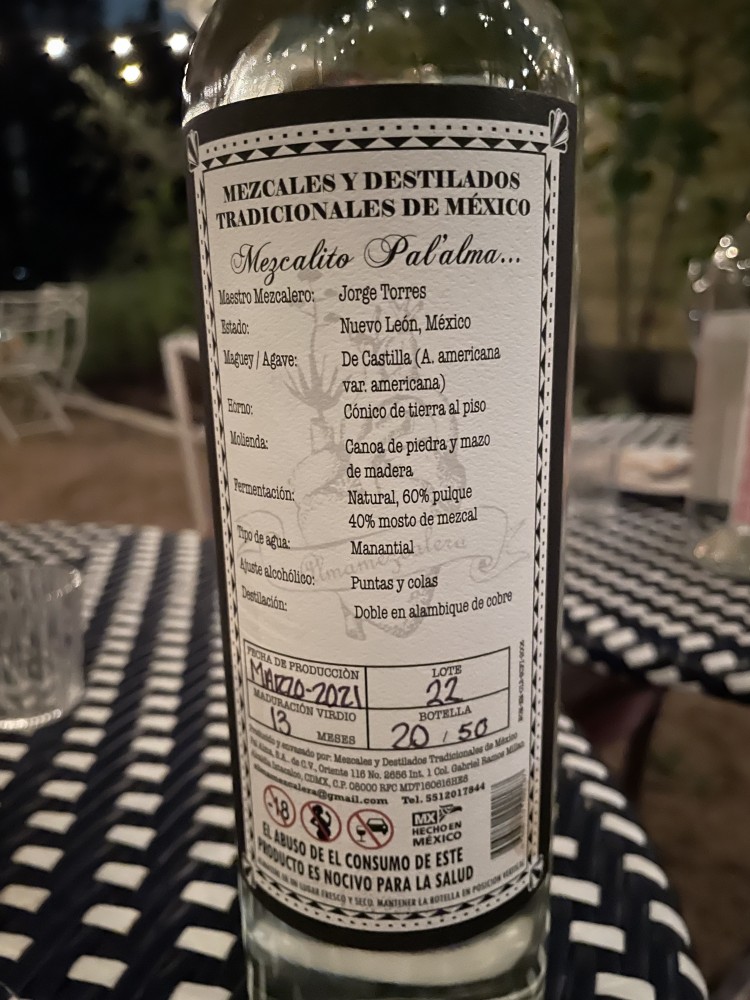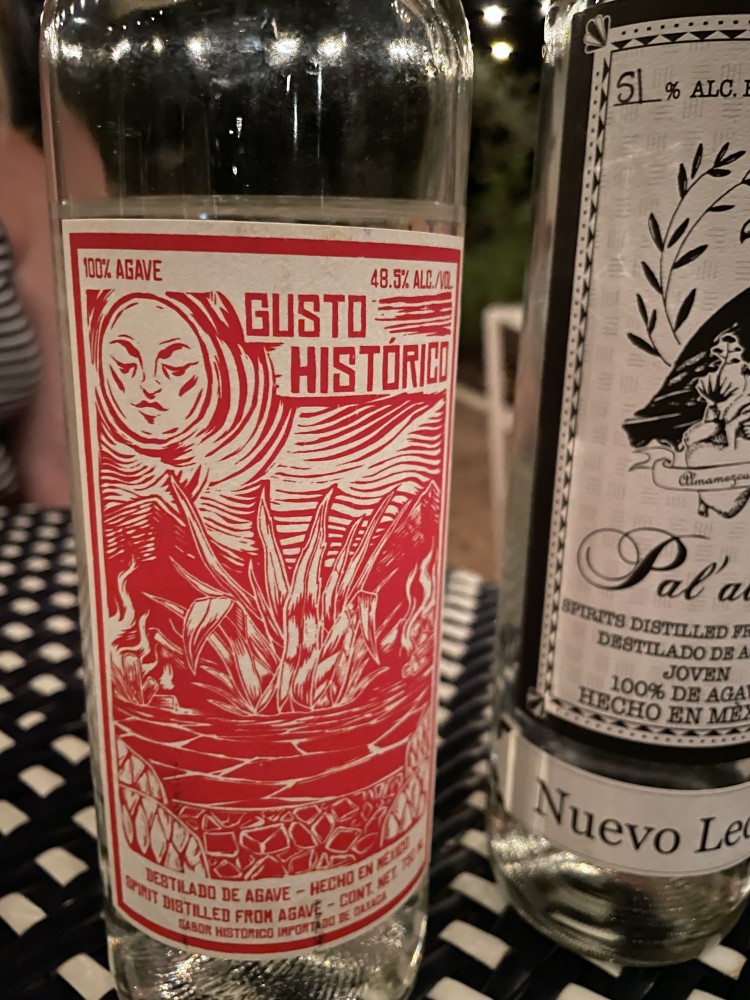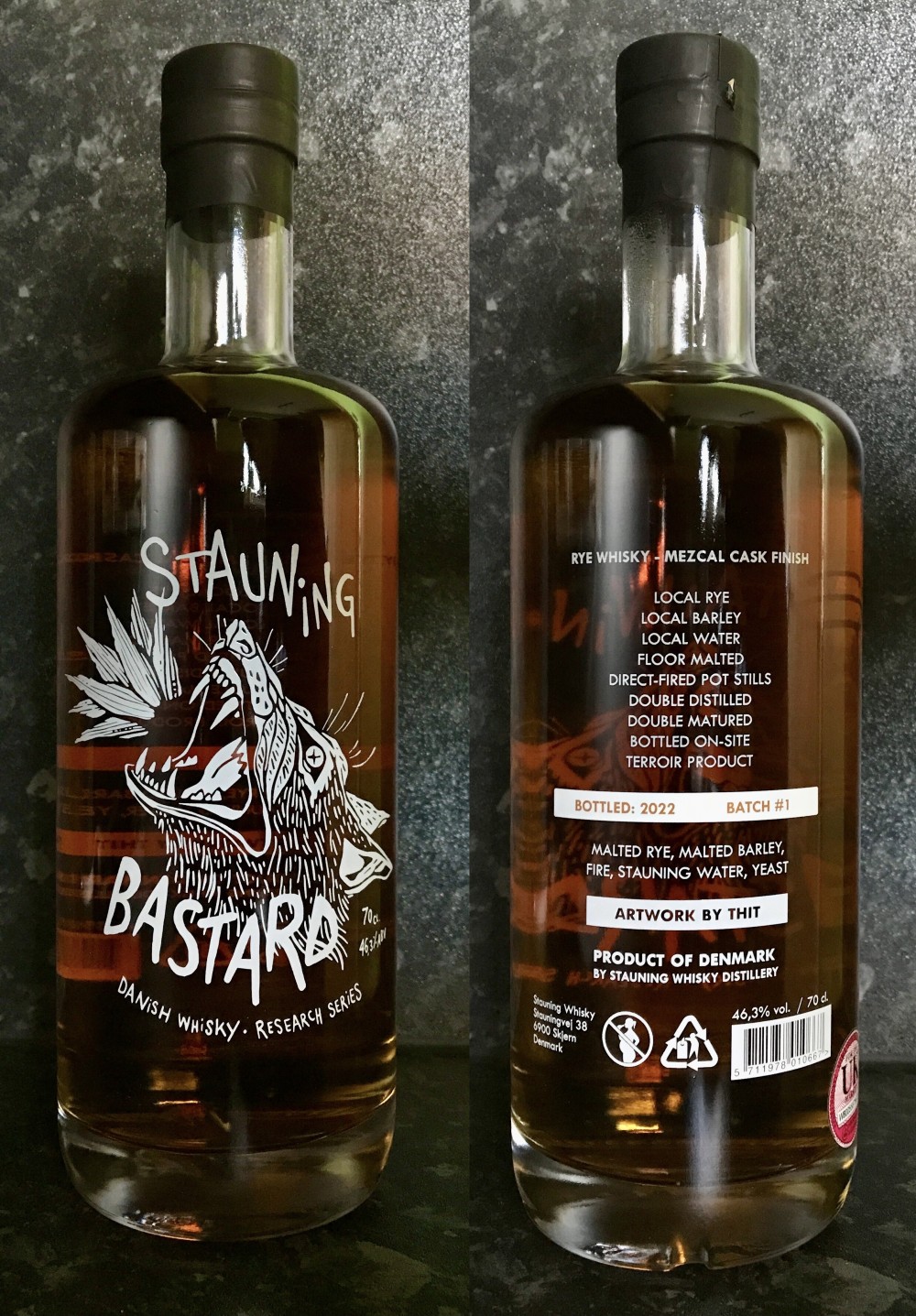Hard Drinkers, Lets Drink Hard (Spirits, Liquors and Cocktails)
-
How is it? I haven’t have many samples and haven’t bought. Too rich for my blood but really not bad for what it is
-
I haven’t tried it yet,and my nephew ,who sent me the video,is super excited that I got it. I’ve been his introduction to Mezcal,and he’s taken to it like a duck to water.He’s currently in Grad school in Holland,and will be back in December. I might wait for him to get back before I try it. Will let you know when I try it.
-
I kind of wish I hadn’t passed on some Mexicana of theirs I saw for a decent price. I may see if they still have it!
-
@sabergirl If you get a chance to try either of these, they were some of the best Mezcals I've ever had! The Pal'alma was absolutely mind blowing. A newly found friend had just returned from a Mezcal tasting trip in Mexico with these:



-
Finally watching now. Thank you! Logging my thoughts as I watch.
To be majorly nitpicky, it starts with a bit of an inaccurate generalization, implying that mezcal is always cooked in a horno in the form of an underground, earthen pit oven. It’s a little confusing, because the term mezcal is both a superset of all agave spirits, including tequila, and a registered DOM. But there are mezcals that use other methods to cook the piñas, as is common on a few states such as San Luis Potosí, where they use autoclaves as they do for tequila in Jalisco. It is not always smoky as they mention because it is not always cooked the same way.
It was fascinating to see what looked like arroqueño and other long, narrow piñas mixed in to the same horno as what could have been espadin piñas. I never thought that they might mix varietals in the same roast, though they certainly do that in the distilling process with ensambles. I would have assumed the different varieties had different cooking requirements so that was interesting to see.
While the growth rate in popularity didn’t surprise me (at low scales a growth rate being extreme is to be expected), it was sobering to hear that the US market had already surpassed Mexico’s 3 years ago. I’m not sure how long we will have some of the wild cultivars around, like my favorite, Tepeztate. So far no one has figured out how to cultivate them, the gestation periods can be decades, and no maguey renews seasonally: once you harvest the piña, it’s gone. So enjoy them while you can, as a lot of these will get very expensive and then be very gone. I’ve seen what look like agave plants in the Mediterranean, so maybe production can continue to expand our side of the ancestral home.
Very sad that some producers don’t even want to be associated with the term “mezcal” given what they’ve done with the DOM. You can see how special this spirit is to these producers, and to see their government and outside influences come in and impact it in such a way, while exploiting them, is a terrible thing to see. Same old story of corruption and cronyism hurting the little guy to the benefit of wealthier and more powerful entities. I have tried to find producer owned labels but they are difficult to find. There are a few like Dixeebe and I hope more of them find success and make it to the US. You see how hard these people work in these videos and for foreign businesses to pay them pennies on the dollar for all that sweat equity and the sacred output of it is so vile. But none of that was new to me. I want my money going to the producers, not middlemen who have inserted themselves into the picture to exploit them.
Interesting to learn about the ways the plants protect themselves, from thorns that work their way into you to toxins. Hardy beasts!
I didn’t know they used waste product as an insulator in the horno and for cleaning bottles and floors. For a process that is often unsustainable beyond what I mentioned about harvesting (e.g., wastewater and what they called inquiche traditionally has been dumped into streams, where it can contaminate the water table and damage farmland’s ability to produce), it is good to hear of this reuse. There is a company down there that is forming bricks to be used for construction out of waste products (Sombra, which I think is another one of these sort of colonial enterprises started by a white American, but at least they’re looking at a sustainable practice).
Love Satan the horse

Amazing that mosquitos infest the fermentation tank and I loved how that fact filled the producer with mirth.
All in all a terrific video, thank you for the share @Jett129
-
Thank you so much for taking the time and effort to write this. Really informative. Is not wanting to call their products mezcal similar to,years ago, when, in order to avoid taxation,they made Racilla,and didn’t call it Tequila. To date the single best mezcal I’ve had was the Tepezate,which is no longer available in my area. Is Real Minero the real deal,or did I fall for it. I was obviously taken/impressed with the woman in the video. Especially when she said any clown can make mezcal.
-
My pleasure. Not an expert just my opinions.
Real is 100% legit and respected. I hope they treat their producers well.
I don’t know the background on raicilla but they use methods that diverge from tequila, different species than blue Weber agave, sometimes they use hornos instead of autoclaves, etc. the only thing that often aligns to the requirements of the tequila DOM is that it is in Jalisco. I have always thought of it as people using methods that simply don’t conform to the DOM requirements because that’s what they’ve done and what they like to do. It produces a more interesting and varied spirit, but I also love tequila. I love raicilla and want to tour a plantation I found next time I visit Jalisco, but some producers aren’t plantations given their scale and primitivity. La Venenosa has some tremendous ones, especially the green, red, and orange labels.
Women are coming up in the mezcal scene. I’ve had some great ones produced by women and I too was taken with her. I think she’s right about everything. And there are a lot of really bad mezcals because doing it is maybe not easy in terms of sweat, but in terms of skill. But doing it well requires skill and experience and I think they have to be able to adapt.
-
@Jett129 I’m not sure. All I could find about the casks is this: “After at least three years in new, toasted virgin American oak casks, it has been rounded off with at least 6-months ageing in old mezcal casks from Mexican Oro de Oaxaca.”
A bit more general info here: https://stauningwhisky.com/products/stauning-bastard-70cl
-
We’re down in Mexico visiting family, and had some flights at Corazón del Maguey in Coyoacán. It’s the restaurant owned by the makers of Alipús and Los Danzantes.

 I think I’ll bring home a bottle of the San Miguel Sola, and my all-time favorite, San Baltazar. I may not get to do much more tasting, as we’ve got a lot of family events going on, and I only get to stay for five days.
I think I’ll bring home a bottle of the San Miguel Sola, and my all-time favorite, San Baltazar. I may not get to do much more tasting, as we’ve got a lot of family events going on, and I only get to stay for five days.Sent from my iPhone using Tapatalk





